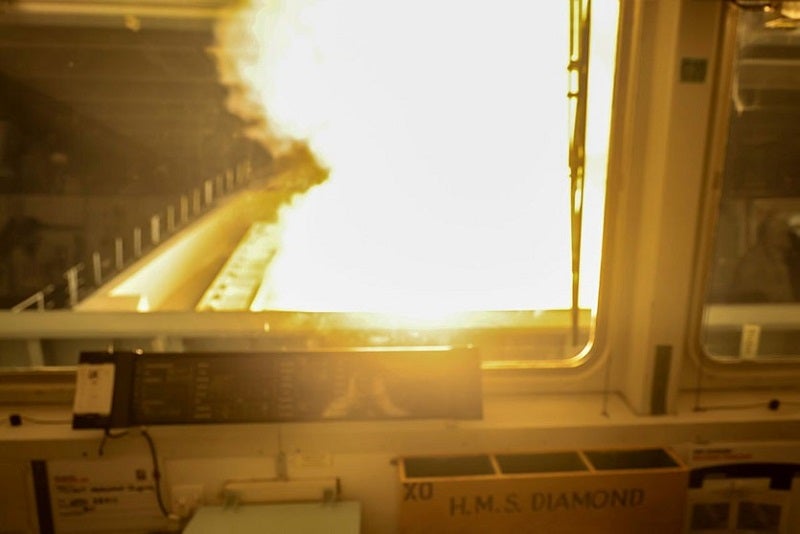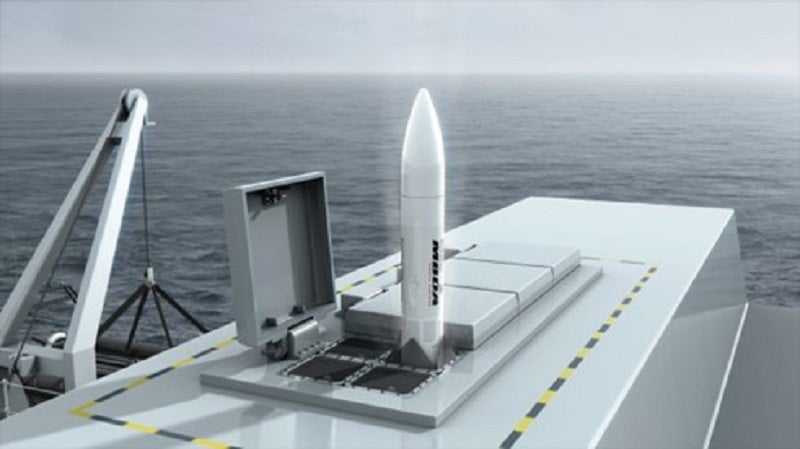
The Type 23 frigate HMS Richmond will replace the Type 45 destroyer HMS Diamond in the Red Sea, where the UK Royal Navy is responding to Iranian-backed Houthi strikes against commercial shipping.
As the threat from the Yemeni militant group escalates, Richmond will join a multinational coalition supporting Operation Prosperity Guardian, a mission to secure freedom of navigation and counter illicit non-state actors endangering global maritime trade.
Diamond joined Prosperity Guardian in December 2023 and maintained a near constant presence in a ‘high threat area.’ The destroyer came under fire in three separate attacks by Houthi rebels, successfully destroying nine drones using her Sea Viper missile system and guns.

Type 45 PIP sustainment
Diamond will now undergo a period of maintenance and resupply as Richmond takes over her important mission.
When the destroyer was originally sent to the Gulf region in November last year, it was anticipated that her presence in the Red Sea would be a short term effort since she has been on a waiting list to undergo engine upgrade work through the Power Improvement Project (PIP) to solve long-standing engine problems afflicting the class.
All six Type 45 destroyers will have completed the PIP by 2028.
How well do you really know your competitors?
Access the most comprehensive Company Profiles on the market, powered by GlobalData. Save hours of research. Gain competitive edge.

Thank you!
Your download email will arrive shortly
Not ready to buy yet? Download a free sample
We are confident about the unique quality of our Company Profiles. However, we want you to make the most beneficial decision for your business, so we offer a free sample that you can download by submitting the below form
By GlobalDataHMS Dauntless was the first to undergo the process, emerging in 2022; followed by HMS Daring (completed in January 2023); HMS Dragon is currently undergoing the PIP process at the BAE Systems site in Portsmouth; with HMS Defender being the fourth vessel in the class to undergo the upgrade and rectification work.
The two remaining Type 45s – HMS Diamond, and HMS Duncan – will each take their turn at Cammell Laird’s Birkenhead shipyard for the PIP programme and Sea Ceptor installation in the coming years.
Royal Navy Type 45 destroyers are anti-air warfare vessels designed to provide local area fleet defence with long-range radar and wide-area defence capability.
They have a length of 152 metres (m), a beam of 21.2m and is capable of accommodating 235 people. These surface combatants reach a top speed of more than 30 knots, while the range is more than 7,000 nautical miles.
The primary weapon system of the Type 45 is the principal anti-aircraft missile system (PAAMS), designated Sea Viper, the missiles used for PAAMS are the Aster 15 and the Aster 30.
The ships carry up to 48 Aster 15 and Aster 30 missiles. The type of missile carries an inertial computer with a datalink, an active J-band Doppler radar seeker and 15 kilogramme warhead.
The ships are also fitted with the 114 millimetre (mm) mark 8 mod 1 medium-calibre gun system for shore bombardment and two 30mm guns. There is provision for the installation of two close-in weapons systems such as the Raytheon Phalanx.
As part of the PIP programme, the Royal Navy plans to add Sea Ceptor missiles (a missile defence system currently used on Royal Navy frigates, such as HMS Richmond) to all Type 45 destroyers.
This will supplement their current longer-range Sea Viper systems (the UK’s version of the European Principal Anti-Air Missile System – PAAMS – using the Aster 15 and 30 missiles).
A Sea Viper Evolution programme is also under way to improve ballistic- and cruise-missile defence capability.
Substitution
Richmond had originally left Plymouth at the beginning of January 2024 and has been present in the Mediterranean since then, where it recently particpated in a joint exercise with the Hellenic Air Force.
The frigate has a crew of 200 sailors and Royal Marines and a Sea Ceptor missile system, capable of protecting shipping spread out across an area the size of Greater Manchester – some 500 square miles of ocean.
Sea Ceptor is a next generation, ship-based, all-weather, air defence weapon system manufcatured by the pan-European missile supplier, MBDA. The system also features on the Navy’s Type 26 frigates.
Sea Ceptor will protect both the host ship and high value units in the local area. The Weapon System has the capability to intercept and thereby neutralise the full range of current and future threats including combat aircraft and the new generation of supersonic anti-ship missiles. Capable of multiple channels of fire, the system will also counter saturation attacks.
The Royal Navy conducted test firing of the Sea Ceptor air defence missile system from Richmond’s sister frigates HMS Argyll and HMS Westminster in December 2017. It was followed by the test firing of the Martlet missile, which was fitted on an MSI Defence 30mm remote weapon station from HMS Sutherland in July 2019.

Additional reporting from Richard Thomas.







